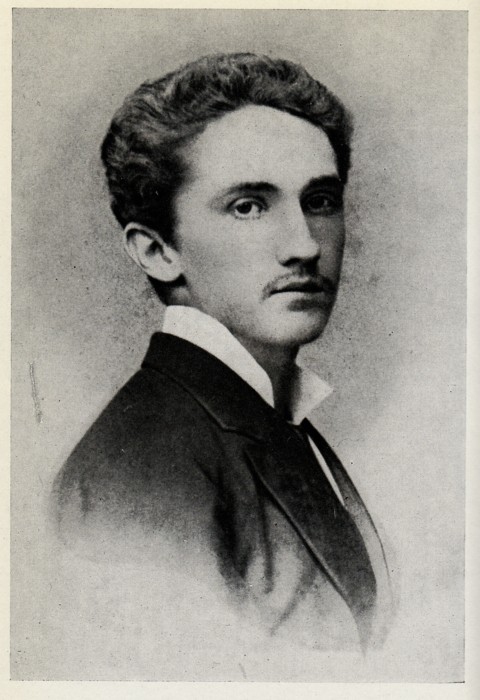http://www.novelscape.net/wg/p/pulusite/zyssnh/010.htm
德·夏呂斯先生的理想非常做作,這也是真的,如果“做作”這個修飾語可以与理想這個詞聯系起來的話,也就是說,既有社交气又有藝術性。几個姿色傾城又有罕見文化素養的女性,兩個世紀以前,她們的祖先就已与君主制度全部的榮光与風雅結為一体。他從這樣的几個女性身上找到了出眾超群的東西,使他能夠和她們在一起才感到快樂。誠然,他對這些女性的欽佩是誠心誠意的,但是她們的名字所喚起的許多歷史与藝術上的模糊回憶也起了很大的作用。恰如賀拉斯的一首頌歌說不定比如今的一些詩歌遜色,但是一個文人讀起前者來會感到快樂,對后者卻無動于衷,對古代的回憶是他感到快樂的原因之一。這些女性中的每一個,与一個漂亮的布爾喬亞女子相比,對他來說,猶如那些古畫之于當代一幅畫著一條路或一次婚禮的油畫。對那些古畫,知道它們的歷史,從定購這些畫的教皇或國王開始,中間又經過什么大人物,這些畫,通過饋贈,購買,取得或繼承遺產,又喚起我們對某一重大事件的回憶,至少也喚起我們某一有歷史意義的聯想,因此我們獲得的知識便賦予這些作品以一种全新的用處,增強了我們頭腦中或我們博學中擁有財富的感覺。如果与德·夏呂斯先生的偏見相似的偏見妨礙這几位貴婦人去与血統不那么純正的女性為伍,而將她們未起任何變化的崇高完整地奉獻到他的祭壇上,就象某一十八世紀建筑的門面,由玫瑰色大理石平滑的廊柱支撐著,新朝代來到并未絲毫改變這門面一樣,他是很為此慶幸的。
德·夏呂斯先生贊賞這些女性真正精神崇高,心地高尚1,就這樣用模棱兩可來搞文字游戲,這模棱兩可欺偏了他自己,其中也有這一含混概念、這种將貴族、心地高尚与藝術混為一談所造成的虛假表象,同時也有夏呂斯先生誘人的一面。對于我外祖母這樣的人,這种引誘是非常危險的。一個貴族,只看到自己的營盤,對其余的則不聞不問,他的偏見更荒唐,但也更無害人之心。對我外祖母來說,她似乎覺得這种偏見過于可笑,但是一旦某种東西在超人智慧的外表下出現,她就無還手之力了,以至她以為王子所有的人都出眾超群,令人艷羡,因為他們得以有拉布呂耶爾2和費納龍3這樣的人作私人教師。
--------
1在法文中,這里用的“崇高”和“高尚”字眼与“貴族”為同一個詞——□oblesse。
2拉布呂耶爾1684年被指定為波旁公爵(1668—1710)的歷史、地理、法國各机构、哲學教師。
3國王路易十四于1684年任命費納龍為其孫子勃艮第公爵(1682—1712)的私人教師。
角色:夏呂斯男爵/ 帕拉墨得斯Charlus, Baron de
角色原型:詩人孟德斯鳩伯爵 Robert de Montesquiou/ Proust曾挑戰決鬥的同性戀詩人小說家尚‧羅杭 Jean Lorrain
角色介紹:言語尖酸刻薄但又幽默機智自視甚高的同性戀, 對敘述者影響很深
 從社交生活中提取一種詩意, 其中有歷史,美,秀麗,詼諧,和淺薄的優雅。
從社交生活中提取一種詩意, 其中有歷史,美,秀麗,詼諧,和淺薄的優雅。
"Robert de Montesquiou"
Marie Joseph Robert Anatole, comte de Montesquiou-Fezensac (March 7, 1855, Paris - December 11, 1921, Menton), was a French aesthete, Symbolist poet, art collector and dandy.
He is reputed to have been the inspiration both for des Esseintes in Joris-Karl Huysmans' (1848-1907) A rebours (1884) and, most famously, for Baron de Charlus in Proust's (1871-1922) A la recherche du temps perdu (1913-1927).
Robert de Montesquiou was a scion of the famous French Montesquiou-Fezensac Family. He was a distant nephew of Charles de Batz-Castelmore d'Artagnan, the model for Dumas' Musketeer. His paternal grandfather was Count Anatole de Montesquiou-Fezensac (1788-1878), Aide-de-camp to Napoleon and grand officer of the Legion d'honneur; his father was Anatole's third son, Thierry, who married Pauline Duroux, an orphan, in 1841. With his wife's dowry, Thierry bought a Charnizay manor, built a mansion in Paris, and was elected Vice-President of the Jockey Club. He was a successful stockbroker who left a substantial fortune. Robert was the last of Count Thierry's children, brothers Gontran and Aymery, and sister Elise.[1] His cousin, Elisabeth, comtesse Greffulhe (1860-1952), was one of Marcel Proust's (1871-1922) models for the duchesse de Guermantes.
He had social relationships and collaborations with many celebrities of the Fin de siecle period, including Alphonse Daudet (1840–1897), Edmond de Goncourt (1822–1896), Eleonora Duse (1858–1924), Sarah Bernhardt (1844-1923), Gabriele d'Annunzio (1863-1938), Luisa Casati (1881-1957), Jean Cocteau (1889-1963), and Maurice Barres (1862-1923).
He had a strong influence on Emile Galle (1846-1904), a glass artist he collaborated with and commissioned major works from, and from whom he received hundreds of adulatory letters.
 (portrait by Giovanni Boldini, Musee d'Orsay, Paris.)
(portrait by Giovanni Boldini, Musee d'Orsay, Paris.)


 →奇人孟德斯鳩男爵
→奇人孟德斯鳩男爵

&&&&&&&&&&&&&&&&&&&&&&&&&&&&
"Jean Lorrain" (August 29, 1855, Fecamp, Seine-Maritime - June 30, 1906), born Paul Duval, was a French poet and novelist of the Symbolist school.
Lorrain was a dedicated disciple of dandyism, and (for the times) openly gay. Lorrain wrote a number of collections of verse, including La foret bleue (1883) and L'ombre ardente, (1897). He is also remembered for his decadent novels and short stories, such as Monsieur de Phocas (1901) and Histoires des masques (1900), as well as for one of his best novels, Sonyeuse, which he links to portraits exhibited by Antonio de La Gandara in 1893. He also wrote the libretto to Pierre de Breville's 1910 opera Eros vainqueur.
 →尚‧羅杭Jean Lorrain
→尚‧羅杭Jean Lorrain


http://ecastaing.free.fr/pierre_philippe/articles_lemonde_ecrivainsetsaltimbanques.html


 字體:小 中 大
字體:小 中 大



 (portrait by
(portrait by 













